Fortnite: Top up and Get 2 Months of Disney+ Service for Bonus
Is There a Vacuum of Casual Games for Female in South Korea? Cookie Run Is Next Only to Lineage, Ranking No.3 in Revenue
Free Fire Shows Strong Momentum, with Its Revenue Overtaking PUBG Mobile in a Single Market for Q1 2021
What You Need to Know About Secured Credit Card Deposits!
How to Download and Install Minecraft?
Angry Birds Journey Soft Launch Takes Flight


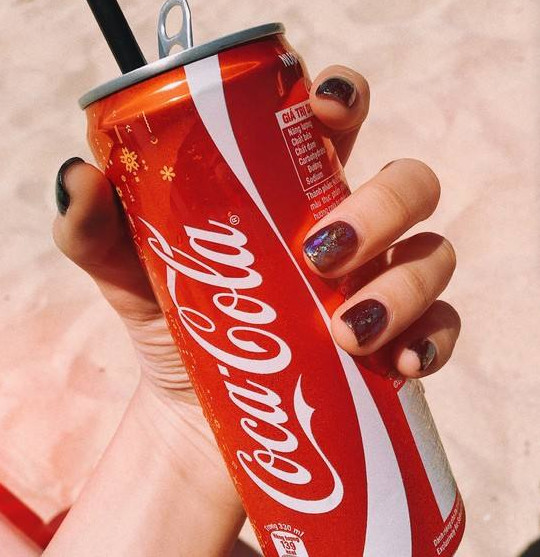
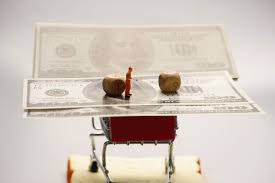
Recently, it is an 88-carat black diamond, named The Korloff Nior Diamond, that enjoys a "special treatment" as an exhibition. As for its size, many may not hold an intuitive concept of 88 carats. Actually, it is equivalent to a half dollar coin in diameter, which is quite amazing! As for its value, many may be left breathless. It is worth about $37 million, which is considered a precious treasure. It is commendable that its appearance at the third China International Import Expo in Shanghai will be its maiden exhibition in China, even in East Asia, on the ground that it is rarely exhibited to the public. Therefore, it becomes the main attraction of this import expo even before its presence.
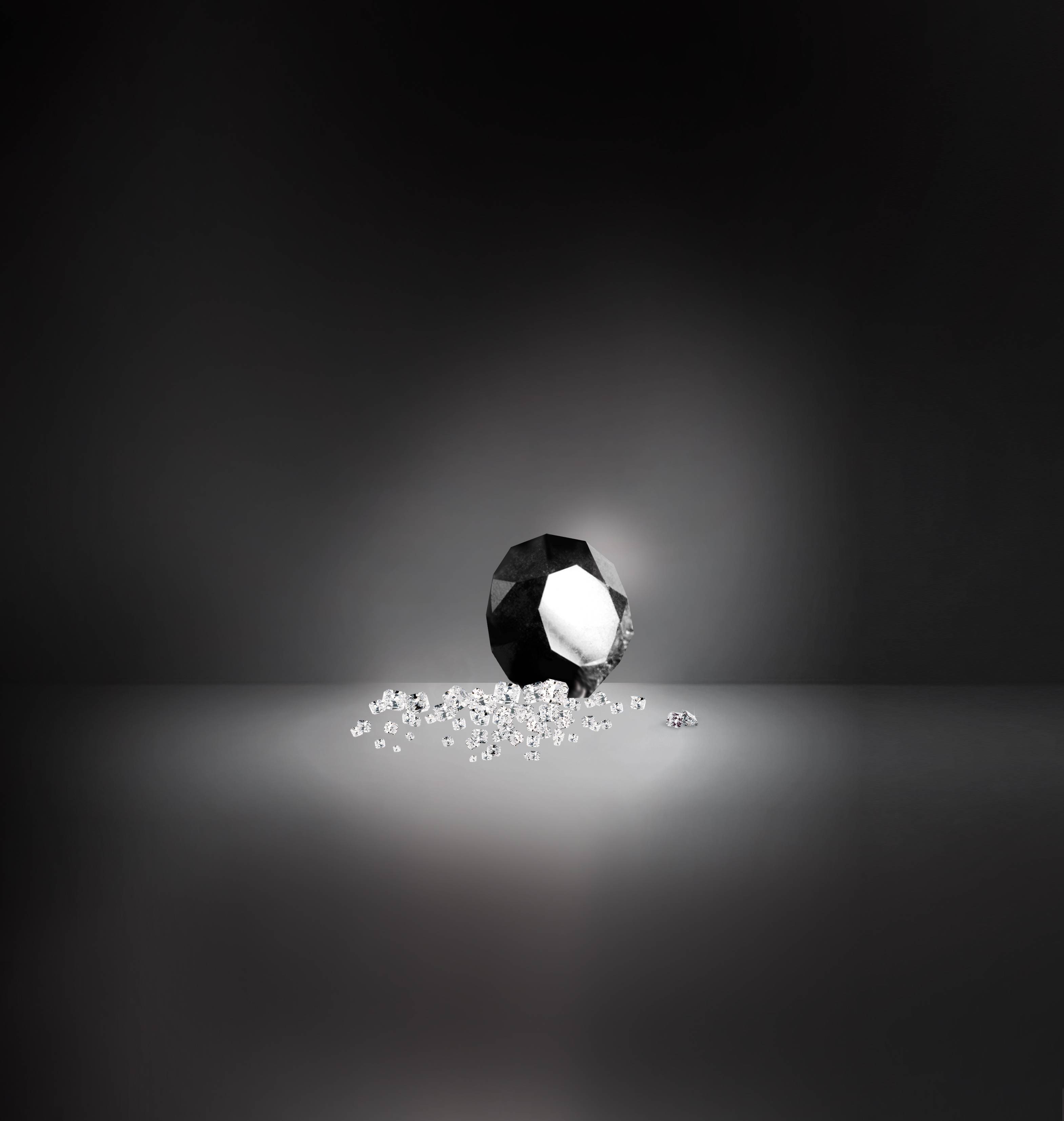 The gem is every inch of a special and precious existence. After all, most people acquiesce that it is transparent or white when it comes to natural diamonds, while few know that there is another type - black diamond. One of the reasons lies in its little production. Almost all the black diamonds discovered so far come from Brazil or the Central African Republic. That's why The Korloff Nior Diamond - the black diamond with such a big size, becomes more precious. What is more interesting is that this rare black diamond bears a matchable legend.
The gem is every inch of a special and precious existence. After all, most people acquiesce that it is transparent or white when it comes to natural diamonds, while few know that there is another type - black diamond. One of the reasons lies in its little production. Almost all the black diamonds discovered so far come from Brazil or the Central African Republic. That's why The Korloff Nior Diamond - the black diamond with such a big size, becomes more precious. What is more interesting is that this rare black diamond bears a matchable legend.
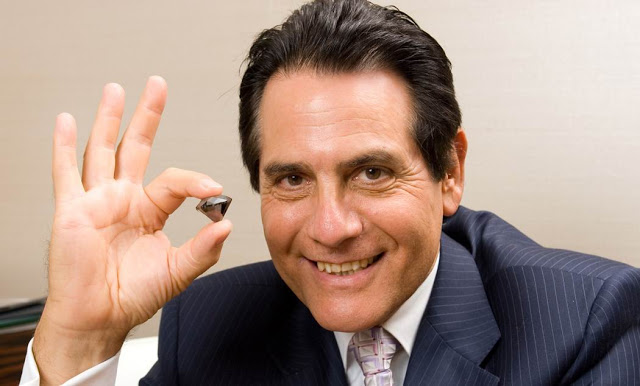
The original rough diamond is said to have weighed 200 carats. It is first owned by the Korloff Sapojnikoff family, members of the Russian nobility. However, due to the world-wide turmoil, it was later purchased by Daniel Paillasseur, the founder of the Jorloff Jewelers of France, from whom the diamond got its name in the 1970s.
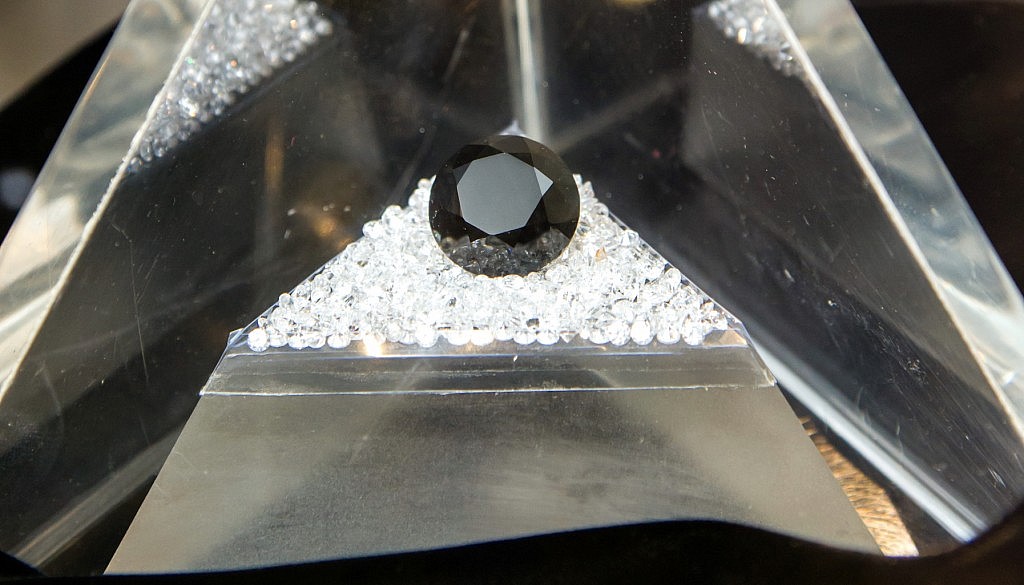 Owing to its excellent quality, it entailed more carefulness in the processing of the diamond, which is said to have taken many years from the beginning of processing to the completion of cutting. The diamond has been cut twice. It was cut to 110 carats for the first time, and then was grinded and polished by experienced craftsmen with exacting proportions and symmetry. The diamond it is today has 57 facets with lots of luster. The legendary natural black diamond has since been on display at Korloff’s flagship store in Paris, making it one of the brand’s ultimate talismans.
Owing to its excellent quality, it entailed more carefulness in the processing of the diamond, which is said to have taken many years from the beginning of processing to the completion of cutting. The diamond has been cut twice. It was cut to 110 carats for the first time, and then was grinded and polished by experienced craftsmen with exacting proportions and symmetry. The diamond it is today has 57 facets with lots of luster. The legendary natural black diamond has since been on display at Korloff’s flagship store in Paris, making it one of the brand’s ultimate talismans.
The Korloff Nior Diamond occupies an extremely high status, not only in the jewelry industry, but also in the globe, reputed as one of the world's top five black diamonds.

The Black Orloff is the most famous black diamond in the world. The 195-carat uncut stone originally featured as one of the eyes in a statue of Brahma, the Hindu God of creation, which stood in a shrine in the southern Indian city of Pondicherry. Brahma is the "the Creator" of the three main gods in Hinduism, so this diamond is also known as "the eye of the Creator". It is said that in order to break the curse of Brahman, it was cut into three pieces and then moved around the world. Going back to the turn of the 18th century, the diamond was in the possession of a Russian heir named Princess Nadia Vygin-Orlov. This unverified legend still lives on and it's the mystique of The Black Orloff that makes great contribution to its fame in the jewelry industry.
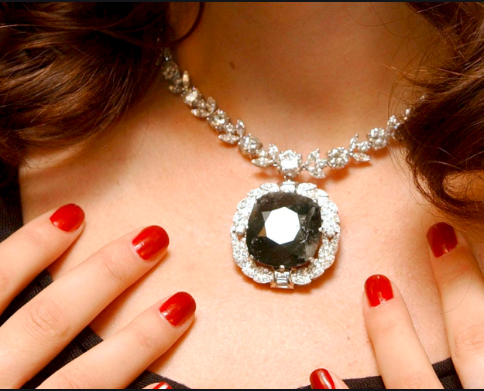
The Spirit of Grisogono weighs a hefty 312.24 carats, making it one of the largest diamonds in the world and the second largest black diamond ever found. The 587-carat rough diamond is part of a famous black diamond collection by the illustrious Swiss jeweler Fawaz Gruosi, the owner of the luxury jeweler company, de Grisogono. Found in the mines of Central Africa, The Spirit of de
Grisogono found its way to Switzerland where Gruosi carefully cut the diamond to the shape it is today using a historical Moghul cutting technique. It took more than a year to work out its cutting technique, design and to really cut the rough gem. Today, this stone sits on a ring with over 700 studded diamonds. At last, the ring was sold to private customers of de Grisogono.
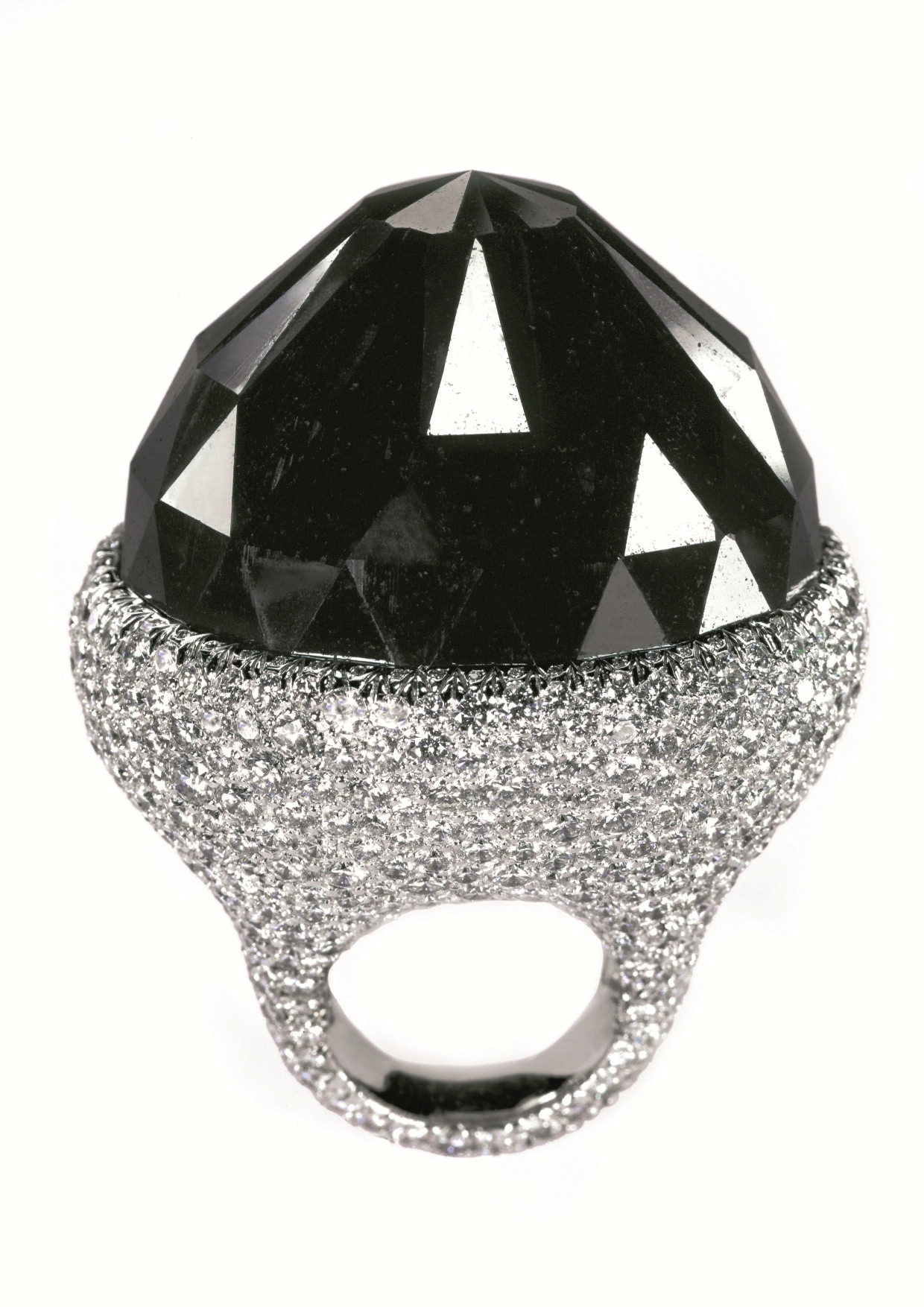 The Gruosi Diamond, weighing 115.34 carats, is the biggest heart-shaped black diamond in the world. The Gruosi Diamond features an unequal amount of hard and soft areas. Certain spots were very fragile, while others were extremely hard, which brings more difficulty in cutting. As such, it took 3 years to cut the rough diamond emerged as the 115.34-carat Gruosi Diamond, resulting in an enormous loss of about 184.78 carats. Today, the heart shaped black stone is the centerpiece of a necklace set in white gold with 58.77 carats of smaller black diamonds, 378 white diamonds, and 14.1 carats of tsavorite garnets.
The Gruosi Diamond, weighing 115.34 carats, is the biggest heart-shaped black diamond in the world. The Gruosi Diamond features an unequal amount of hard and soft areas. Certain spots were very fragile, while others were extremely hard, which brings more difficulty in cutting. As such, it took 3 years to cut the rough diamond emerged as the 115.34-carat Gruosi Diamond, resulting in an enormous loss of about 184.78 carats. Today, the heart shaped black stone is the centerpiece of a necklace set in white gold with 58.77 carats of smaller black diamonds, 378 white diamonds, and 14.1 carats of tsavorite garnets.
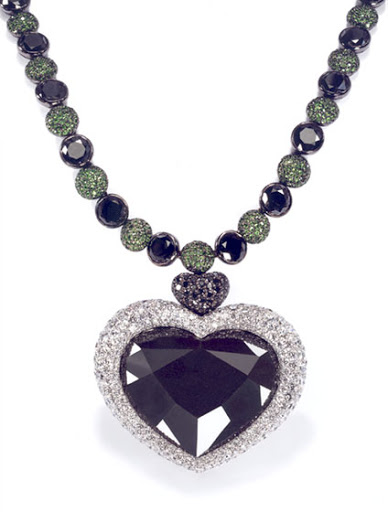 Amsterdam Black Diamond, discovered in South Africa, is a 33.74-carat, pear-shaped black diamond, with its original weight of about 56 carats. The stone fetched a $352,000 price tag in Christies’ 2001 London Auction. It was exhibited in the European Diamond Council to the public and was named Amsterdam by its owner D.Drukker to honor the 700th anniversary of the City of Amsterdam.
Amsterdam Black Diamond, discovered in South Africa, is a 33.74-carat, pear-shaped black diamond, with its original weight of about 56 carats. The stone fetched a $352,000 price tag in Christies’ 2001 London Auction. It was exhibited in the European Diamond Council to the public and was named Amsterdam by its owner D.Drukker to honor the 700th anniversary of the City of Amsterdam.
 Although these black natural diamonds are well-known and sought after by people, this kind of black, the embodiment of the mystery, is known by few throughout jewelry history. It seems that only in the Victorian period, Queen Victoria only wore jewelry mainly in black to show her grief of losing her spouse. Therefore, black became the main choice of jewelry at that time, which made the natural black diamond popular for some time. But most of the time, the natural black diamonds cost highly due to its scarcity, resulting in their few presence in the market or international auction. People who wear them are often labeled as "outliers". It was not until the late 1990s that this concept was gradually reversed. Designers began to try to use natural black diamonds in jewelry. However, most of the time, natural black diamond was used to contrast with white diamond or serve as ornament, and was rarely used as main stone inlay.
Although these black natural diamonds are well-known and sought after by people, this kind of black, the embodiment of the mystery, is known by few throughout jewelry history. It seems that only in the Victorian period, Queen Victoria only wore jewelry mainly in black to show her grief of losing her spouse. Therefore, black became the main choice of jewelry at that time, which made the natural black diamond popular for some time. But most of the time, the natural black diamonds cost highly due to its scarcity, resulting in their few presence in the market or international auction. People who wear them are often labeled as "outliers". It was not until the late 1990s that this concept was gradually reversed. Designers began to try to use natural black diamonds in jewelry. However, most of the time, natural black diamond was used to contrast with white diamond or serve as ornament, and was rarely used as main stone inlay.